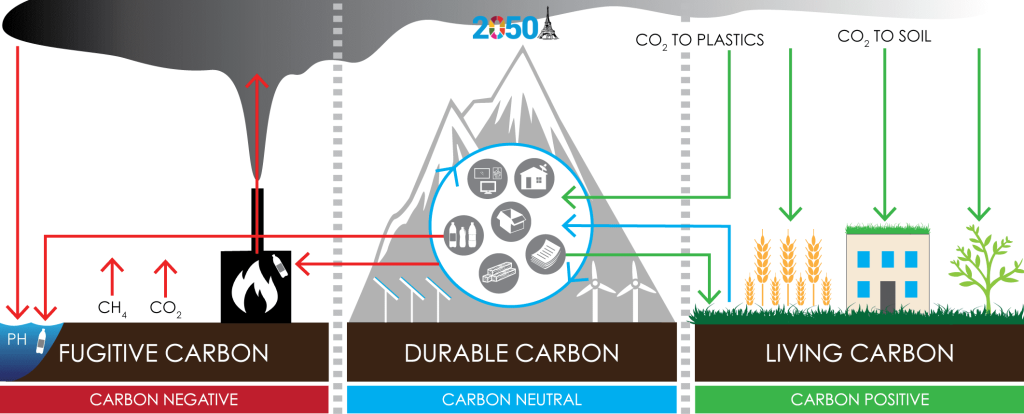Carbon Neutral vs. Carbon Positive: Navigating the Path to Sustainability
Share this article:
Introduction - Carbon Neutral
In an era where climate change looms large on the global agenda, the imperative to reduce carbon emissions has never been more crucial. As individuals, businesses, and nations strive to mitigate their environmental impact, concepts like "carbon neutrality" and "carbon positivity" have emerged as beacons of sustainability. Let's delve into these two approaches, understand their nuances, and deliberate on which one holds the key to a greener future.
What is Carbon Neutrality?
Carbon neutrality, at its core, revolves around achieving a balance between the carbon emissions produced and the carbon removed from the atmosphere. This equilibrium is typically attained through a combination of strategies. First, reducing carbon emissions through energy efficiency, cleaner technologies, and sustainable practices. Second, offsetting any remaining emissions by investing in projects that capture or reduce an equivalent amount of carbon elsewhere, such as reforestation initiatives or renewable energy projects. The aim is to have a net-zero carbon footprint, where the emissions released into the atmosphere are counterbalanced by the emissions removed or mitigated.
What is Carbon Positivity?
While carbon neutrality focuses on achieving a balance, carbon positivity takes sustainability a step further. The concept of carbon positivity entails not only offsetting one's carbon emissions but also actively working to remove additional carbon dioxide from the atmosphere, resulting in a net-positive impact on the environment. This involves investing in initiatives that go beyond offsetting, such as advanced carbon capture technologies, soil sequestration, and other innovative solutions that contribute to an overall reduction in atmospheric carbon levels.

Which is Better: Carbon Neutrality or Carbon Positivity?
The debate between carbon neutrality and carbon positivity is nuanced, and the answer lies in the goals and ambitions of each entity or individual. Carbon neutrality, as a starting point, addresses the urgency of halting the rise in carbon emissions and mitigating their impact on climate change. It offers a practical way for businesses and individuals to take responsibility for their carbon footprint by making meaningful reductions and supporting carbon offset projects. It's a vital step in the right direction, and achieving net-zero emissions can have a profound impact on the global carbon trajectory.
On the other hand, carbon positivity embodies a proactive stance that extends beyond merely halting emissions. It recognizes the need to actively repair the damage that has already been done to the environment. By not just offsetting, but also actively contributing to carbon removal, carbon-positive initiatives can help accelerate the restoration of ecosystems, enhance biodiversity, and potentially reverse some of the adverse effects of climate change.
However, the feasibility of achieving carbon positivity varies across industries and contexts. Some sectors may find it challenging to implement carbon-positive practices due to technological limitations, resource availability, and financial constraints. In such cases, focusing on becoming carbon neutral might be a more realistic initial goal. As technologies and methodologies continue to evolve, transitioning from carbon neutrality to carbon positivity could become a more attainable objective.
Final thoughts
In the ongoing battle against climate change, both carbon neutrality and carbon positivity are critical steps in the right direction. Carbon neutrality provides an entry point for individuals, businesses, and nations to take responsibility for their carbon emissions, reduce their footprint, and support sustainable projects. On the other hand, carbon positivity offers a more ambitious path, one that aims not only to offset emissions but also to actively contribute to carbon removal and ecological restoration.
The choice between the two approaches depends on a multitude of factors, including an entity's capacity for innovation, its commitment to environmental stewardship, and the availability of resources. In the grand scheme of things, both concepts hold immense value in the quest to create a sustainable future. As technology advances and awareness deepens, the line between carbon neutrality and carbon positivity might blur, leading to a harmonious convergence of efforts aimed at healing our planet.
Subscribe to our Newsletter
As we work to foster and rejuvenate the natural surroundings, we come across a multitude of significant achievements along our voyage. This extraordinary expedition extends an offer, and we enthusiastically invite you to partake in this undertaking alongside us.